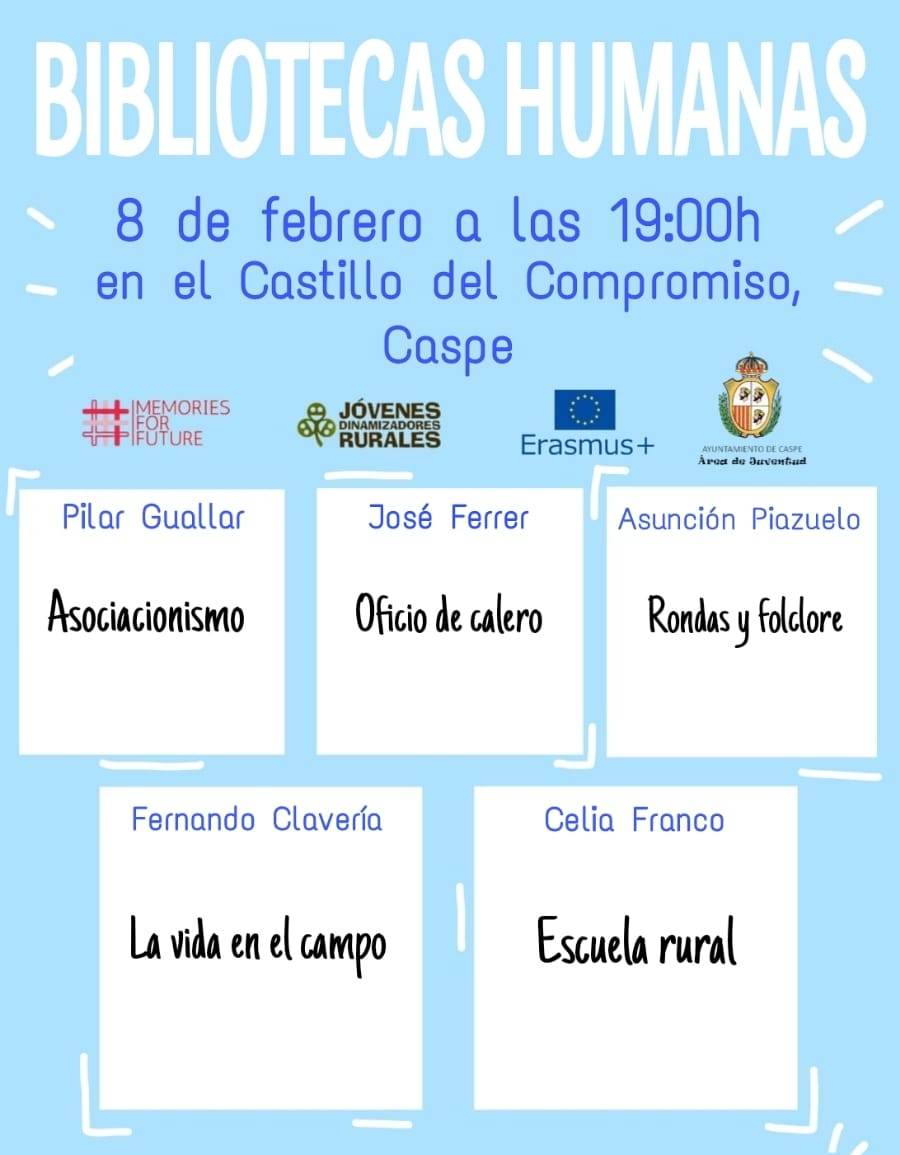
06 Feb Biblioteca humana. Un espacio de conexión entre pasado y presente.
¿Eres más de escuchar que de leer? ¿Te gustan las historias contadas en primera persona? ¿Te imaginas ir a una Biblioteca donde en lugar de encontrar Libros para leer encontraras Personas a las que escuchar?
Pues lo tenemos! Desde Jóvenes dinamizadores rurales y el área de juventud del Ayuntamiento de Caspe, hemos organizado la segunda biblioteca humana sobre patrimonio cultural inmaterial; Fue el jueves, 8 de febrero, a las 19.00 horas en el Castillo Compromiso.
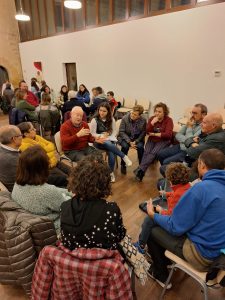
Estuvimos con cinco» libros» muy interesantes, que nos contaron historias sobre cultura, participación, educación, sociedad y oficios. Cinco personas que compartieron sus vivencias en primera persona con 50 lectores atentos a cada uno de los detalles y curiosidades que reflejaban nuestra historia y nuestra identidad.
José Ferrer nos contó como se fabricaban y se utilizaban los hornos de cal, y dónde se encuentran los restos de algunos de ellos, aunque no estén activos. Una de las participantes de esta biblioteca, nos apuntaba que «sería muy interesante poder ir a ver uno de éstos hornos, para entender mejor todo el proceso».
Pilar Guallar, impulsora de la Asociación de la Mujer Caspolina, compartió con un numeroso grupo de ávidas lectoras, las dificultades que se encontraron para abrir camino en la participación de la mujer en una sociedad rural en la que los roles estaban muy definidos y cómo esa lucha les marcó para trabajar por la igualdad real de la mujer.
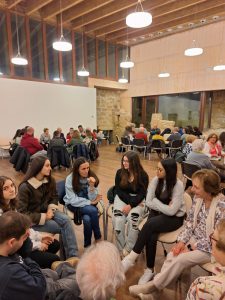
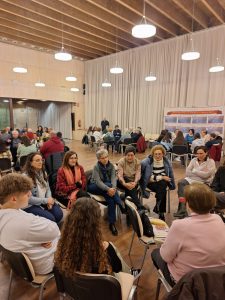 Con Fernando Clavería hablamos sobre el exilio que vivió durante la posguerra, hasta su llegada a Caspe, lugar donde se desarrolló personal y profesionalmente en el ámbito de la agricultura, y sobre todos los proyectos innovadores que llevaron a cabo, él y su familia, a través de diferentes cultivos y siempre con amplitud de miras.
Con Fernando Clavería hablamos sobre el exilio que vivió durante la posguerra, hasta su llegada a Caspe, lugar donde se desarrolló personal y profesionalmente en el ámbito de la agricultura, y sobre todos los proyectos innovadores que llevaron a cabo, él y su familia, a través de diferentes cultivos y siempre con amplitud de miras.
Asunción Piazuelo ha dedicado toda su vida a enseñar la Jota Aragonesa. » En su origen, en las rondas, íbamos cantando y tocando por la calle sobre todo para «rondar» a las mozas. Antes, como no había Instagram, esta era la manera que tenían los chicos de decirle a las chicas que querían salir con ellas».
Volvimos a contar con Celia Franco, maestra de profesión, quien nos contó los inicios de su vida en la escuela rural.
» Ha sido un reto organizar esta bilbioteca humana abierta a todo el pueblo, y muy gratificante ver cómo las personas que han participado agradecen este tipo de espacios de encuentro y aprendizaje» Nos cuentan Sara y Africa, bibliotecarias de este proyecto.
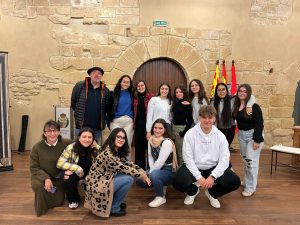
La actividad, que forma parte del proyecto europeo «Peripheral memories for future», es fruto de la participación de 10 jóvenes de 16 y 17 años, que desde el pasado mes de agosto, están trabajando por la recuperación del patrimonio inmaterial de Caspe. Este mismo grupo, ya organizó, el pasado mes de diciembre, una biblioteca humana en el IES Mar de Aragón, y tienen intención de organizar una tercera el próximo mes de abril.
*************************************************************************************************************
HUMAN LIBRARIES. A PLACE TO SHARE PAST AND NOWADAYS
Are you better listener than reader? Do you like stories told in first person? Can you imagine going to a Library where instead of finding Books to read you would find People to listen to?
Well, we have it! Jóvenes dinamizadores rurales and the youth area of the Caspe Town Council, we have organised the second human library on intangible cultural heritage; It was on Thursday, 8th February, at 19.00 hours in the Castillo Compromiso.
We were with five very interesting «books», who told us stories about culture, participation, education, society and crafts. Five people who shared their experiences in first person with 50 readers who were attentive to every detail and curiosity that reflected our history and our identity.
José Ferrer told us how lime kilns were made and used, and where the remains of some of them can be found, although they are no longer active. One of the participants in this library pointed out that «it would be very interesting to be able to go and see one of these kilns, to better understand the whole process».
Pilar Guallar, promoter of the Caspolina Women’s Association, shared with a large group of avid readers the difficulties they encountered in opening the way for women’s participation in a rural society in which roles were very well defined and how this struggle marked them to work for the real equality of women.
We talked to Fernando Clavería about the exile he lived through during the spanish civil post-war period, until his arrival in Caspe, where he developed personally and professionally in the field of agriculture. He told as about all the innovative projects that he and his family carried out, through different crops and always with a broad outlook.
Asunción Piazuelo has dedicated her whole life to teaching the Jota Aragonesa. «Originally, in the «rondas», we used to sing and play it in the streets, mainly to have fun and enjoy in our free time. In th e 60`s as there was no Instagram, Rondas was the way used to tell the girls that boys wanted to go out with them».
We spoke aswell to Celia Franco, a teacher by profession, who told us about the beginnings of her life in rural schools.
«It has been a challenge to organise this human library open to the whole village, and very gratifying to see how the people who have participated appreciate this kind of meeting and learning spaces» Sara and Africa, librarians of this project, tell us.
The activity, which is part of the European project «Peripheral memories for future», is the result of participation of 10 young people aged 16 and 17, who since last August, have been working for the recovery of the intangible heritage of Caspe. Last December, this same group organised a human library in the IES Mar de Aragón, and they intend to organise a third one next April.




No Comments